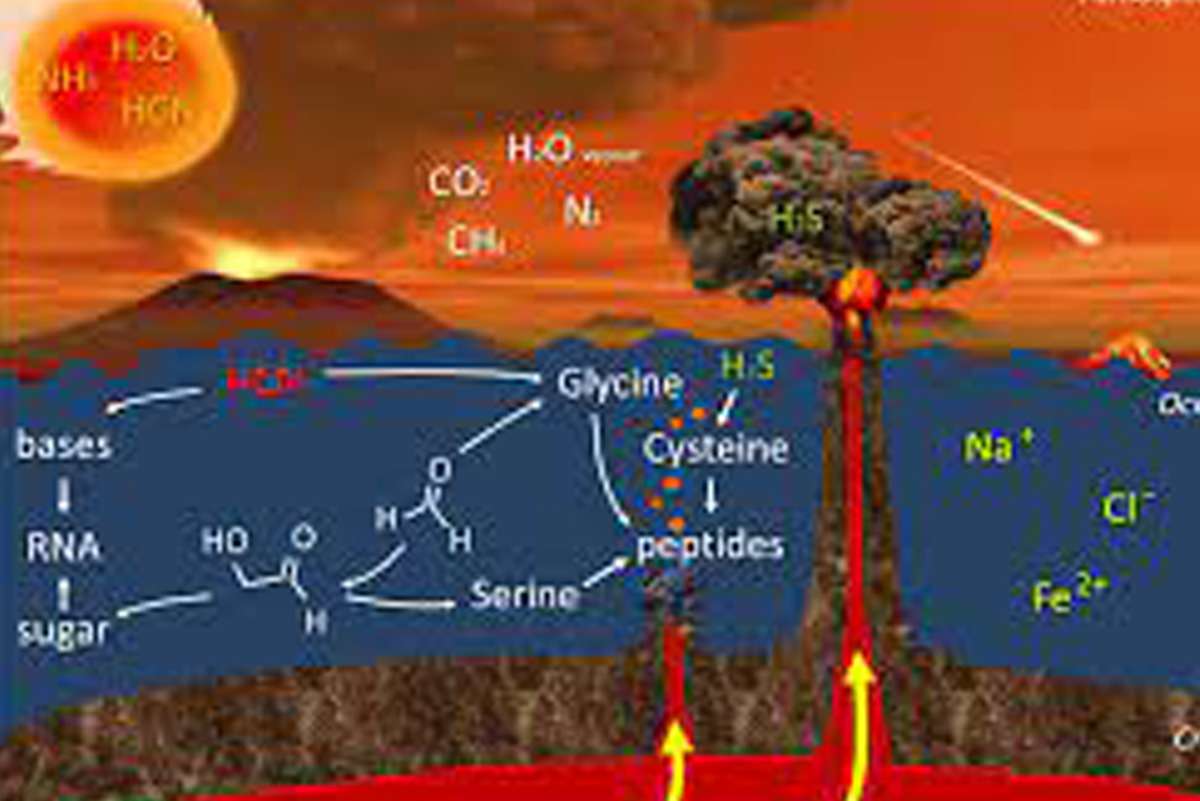The atmosphere was not present when the Earth took its birth some 4.5 b. y. ago. Earth’s original atmosphere probably formed along with the planet. Scientists theorise that the Sun and all the planets formed from a cloud of gas and dust about 4.5 billion years ago. The cloud collapsed into a central body, which formed the Sun and ten rings. The rings eventually became the nine planets. One ring did not form a planet.
It is likely that high-energy radiation from the young Sun, called the solar wind, scattered into space most of the gases that had originally collected around the closest to the Sun, including Earth. Some of the more distant planets, such as Jupiter and Saturn, have retained their first atmospheres.
After the solar wind scattered Earth’s original atmosphere, a new atmosphere formed from gases, such as hydrogen, methane, and water vapour that were trapped inside the Earth when it formed. Most of these gases escaped during volcanic eruptions. In fact, escaping gases are still adding to the atmosphere today.
One abundant gas of this primitive atmosphere was water vapour. This water vapour produced rains that lasted for millions of years. These rains filled in the low places on the Earth and formed the primitive ocean. Escaping hydrogen was lost into space. Other gases, such as carbon dioxide and sulphur dioxide, were created by chemical reaction and remained in the new atmosphere. This primitive atmosphere was very different from the Earth’s present atmosphere.
The living organisms that evolved on the Earth were probably responsible for the change from the primitive atmosphere to the present atmosphere. Bacteria, among the first living organisms on the Earth, developed two processes that were fundamental to life. At first, they used ammonia from the primitive atmosphere to make the chemical compounds necessary for life. Later, the bacteria used sunlight as a source of energy to make their own food. These bacteria, called cyanobacteria, made their food through the process of photosynthesis. During photosynthesis, water and carbon dioxide are combined chemically to make sugar.
Photosynthesis also releases oxygen as a by product. Other life forms needed this oxygen to survive. Today green plants, rather than cyanobacteria, produce most of the oxygen in the atmosphere.
Of the gases that were released into the primitive atmosphere, some, especially oxygen and carbon dioxide, dissolved in the ocean. In water, carbon dioxide reacts with rocks, forming calcium carbonate. By about 600 million years ago, enough oxygen had dissolved in the ocean to allow animal life to evolve there. Many of these early life forms had shells of calcium carbonate. Most of the carbon dioxide in the Earth’s atmosphere was used by these animals to form their shells. Only a trace of carbon dioxide remains in the atmosphere today.
With the removal of carbon dioxide from the primitive atmosphere, nitrogen became the most abundant gas. Oxygen, from photosynthesis, soon became the second most abundant gas. As oxygen increased, the sulphur dioxide in the primitive atmosphere was oxidized to sulphuric acid. The sulphuric acid then washed out of the atmosphere as “acid rain.”

